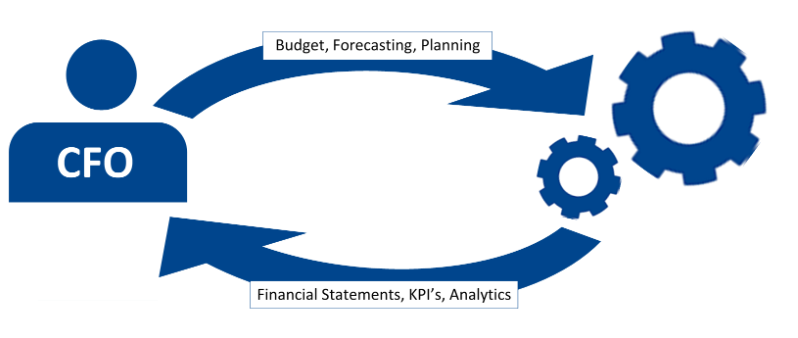What is EPM?

I get asked a lot by friends and family outside (and sometimes inside) the consulting profession what it is I actually do for a living.
Even the Wikipedia page for EPM is determined “too abstract” for general audiences. I find it quite disheartening that the encyclopaedia of the internet doesn’t have a digestible description for my career, so I thought I’d write my own in layman’s terms.

EPM is an acronym of Enterprise Performance Management.
In the simplest terms EPM is:
“Planning using feedback from data across the business to improve the (generally financial) performance and efficiency of a company”
This can include all systems, processes, activities and reporting a firm has in place that rely upon using data to plan future decisions.
EPM in practice is carried out by the “top down”. This means it generally sits within the remit of the CFO and senior financial controllers to utilise the information available to them to determine the most effective allocation and subsequent flow of cash throughout the business.

A lot of the time EPM is referred to as a closed loop process (also sometimes referred to as a feedback control loop). This can become a convoluted description with multiple detailed steps but it doesn’t help us understand the fundamental concept. Here is a super simplified explanation:
“A closed loop management process is when a company uses data (“feedback”) from current operations (i.e. sales reports, financial statements) to influence their future decision making”.
Its opposite, an open loop system is where there is no feedback from the output (financial performance) on future decision making.

I know what you’re thinking, surely every company analyses past performance to help develop business?
The issue many companies face is they have mountains of data to clean, maintain, format and manage, meaning the amount of man hours it takes to do thorough, valuable analysis can come into conflict with business as usual reporting and controlling.
Assuming all executive level business decisions are 100% logical when made based upon internal data, it is essential that the accuracy and quality of the data is as high as possible. A large component of EPM is to ensure the quality, reliability and timely delivery of internal data over the long term to ensure executives can be confident making informed decisions from it.
Purpose of an EPM IT Project
Due to large amounts of data, many companies turn to software to manage their EPM efforts. They may have different KPI’s and requirements, however, there are some simple principles that are almost always key to a successful project:
- Generally, the aim is to remove any sense of tedium by placing repetitive and calculative processes into a fixed system. In doing so remove the likelihood for human error and ensuring consistent results.
- Review current process and see if there is more insight to be gleaned from internal data. This can be anything from calculating financial ratios, determining complex algorithms to automating business forecasting.
- Develop outputs from that system that allow business users to boil down large amounts of data into quick, concentrated insight, so they can spend more time analysing and developing actionable solutions to business problems instead of hours of data cleansing.
In what context can EPM be beneficial?
EPM can be tailored to a wide range of business functions:

In reality, almost any financially driven business function can be included and adapted into a company’s performance management efforts, if data is available.
In Summary, what can an EPM consultant do to help businesses with their Performance Management efforts?
-
- Move complex data management and transformation processes into an IT solution and give financial analysts more time in their day to provide insightful analysis.
- Help Standardising Financial Processes across large organisations.
- Advise on best practice for managing processes and automation.
- Create Security protocols and Lock down data access to specific key user groups.
- Automates calculations and data cleansing processes.
- Help translate business requirements into Information Technology reality.
Solutions and practises can be far more complex than described above and there are numerous creative challenges dependant on client, industry and a myriad of other factors. However, I hope this has provided a solid and more importantly, digestible overview.
Author: Edward Wilson